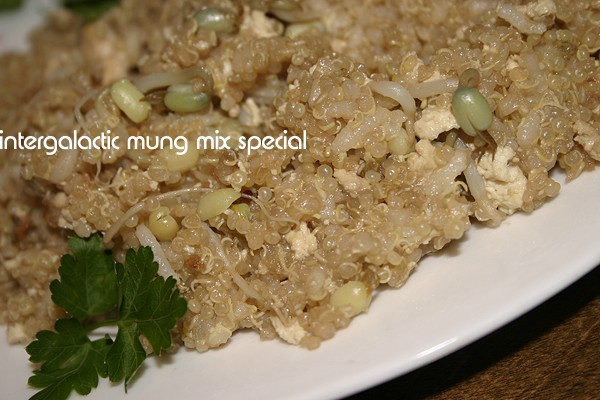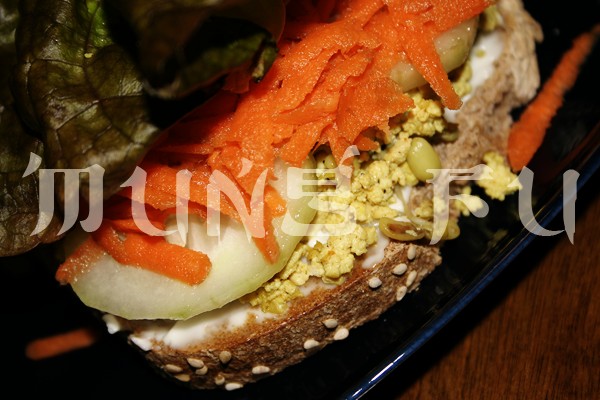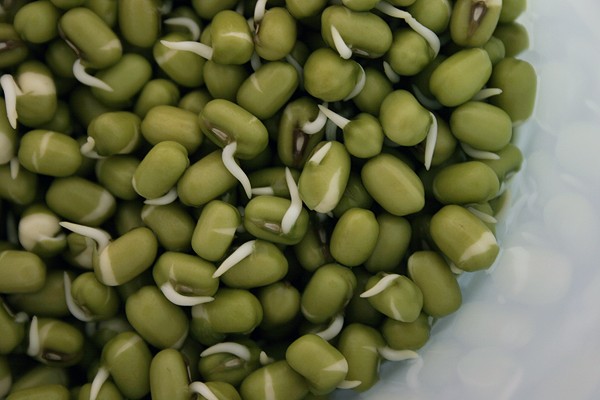

intergalactic mung mix special
|
mung fu
|
put it on a piece of whole grain bread with vegan mayonnaise, grated carrot, cucumber, tomato, alfalfa sprouts, lettuce - any and all of the above or whatever else that does inspire... also good with rice, quinoa, pasta - any grain and veggie you feel like... superb sandwich stuff
The most consumed sprout on Earth, Mungs are grown and used extensively in Asian cuisine. Perhaps the most exciting sprout to grow as it offers unique challenges. Mungs are probably the best cooking sprout - especially if you like Chinese food.
how to grow mung bean sprouts

Mung Beans (Vigna radiata) are small 1/4 inch, round, olive green bean. The inside of a Mung Bean is dark mustard colored. When husked and split, the Green Mung Bean becomes known in India as the Yellow Mung, Moong Dal. Mung Beans are used in a variety of forms; whole, peeled, split or ground. Mung Beans are also known as Sabat Moong, Mung Pea, Green Gram, Golden Gram, Black Gram or Moong Dal. Mung Beans have a sweet flavor, soft texture, and are easy to digest. These beans are sprouted to produce bean sprouts, which contain vitamin C, not found in the dry bean. Mung Beans have a long history in India where they originated and were introduced to China many centuries ago, and are the most common beans to be sprouted in Asia, Europe and America.
Small, round, olive-green mung beans are the source of the ubiquitous Oriental bean sprout. Though widely used in Asian cuisine as a legume, mung beans are not as widely used in the West as they deserve to be. Easily digested, they do not require presoaking and they cook up quickly.
With a flavor akin to green split peas, mung beans may be used as a substitute for them in soups and stews. Their flavor is nicely enhanced by curry spices, ginger, garlic, tomatoes and green chilies - as in Mung (Moong) Dal.
Cook ratio - rinse beans well - add 1 cup dry beans to 4 cups water / Cook time - bring to boil, cook on low heat for 45 minutes or until tender.
next recipe | previous recipe | index
